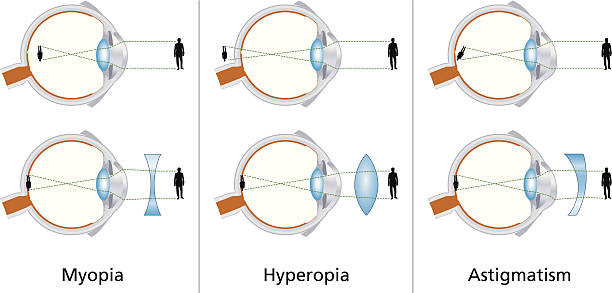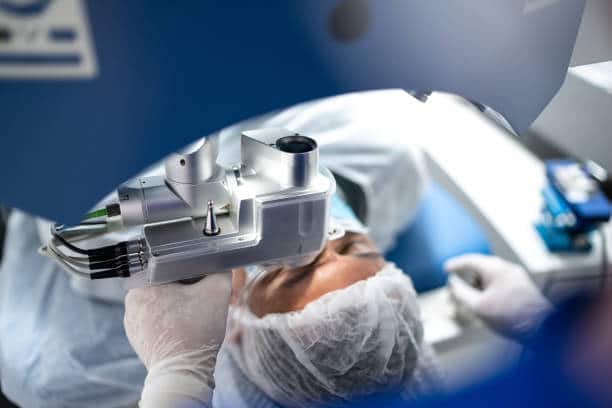LASIK surgery has become a staple of vision correction in the United States upon approval by the FDA in the late 1990s for those desiring to reduce or eliminate their dependence on eyeglasses or contact lenses. Millions of these surgeries have been performed without complication. Indeed it is one of the safest and easiest surgeries available. Its sole goal is to treat refractive errors.
The eye is much like a simple camera, the cornea is the lens, the pupil the opening in the eye like the aperture in a camera, and the retina is the film. Clear vision depends on all of this lining up perfectly much like focusing on a camera. But for most purposes, your eye does not have a focusing option. The retina or film in the back cannot be changed nor can the pupil or aperture, but the cornea certainly can be changed which is precisely what LASIK does. Think of it as a permanent zoom lens correction for your eye thus providing clear vision always. It is all about the cornea.
You are born with a certain cornea. When the cornea is not shaped perfectly, it causes one of the conditions described below. The goal of LASIK and various forms of refractive surgery is through the use of sophisticated computer-guided cameras, mathematical calculations, and very precise laser treatment, to reshape the cornea much like a jeweler fishing a fine gem but 1000 times more precise thus achieving the best vision possible. All of the below can be treated.
There are four types of refractive errors:
Objects close by appear sharp. But objects far away are blurred. The eye is longer than normal from front to back. Or the cornea is curved too much. Images focus in front of the retina instead of on it.
Objects far away appear clearly. But objects up close are blurred. The eye is shorter than normal. Or the cornea is too flat. Images focus on the retina.

Objects are blurred at any distance. The shape of the cornea, lens, or both prevents images from being focused sharply on the retina.
This is also known as aging eyes. The eye loses its ability to change focus because of the natural aging process.
Typically, LASIK is the procedure most used in the above conditions. It involves a laser making a micro-thin incision on the front of the cornea, a hinged flap, much like a contact lens. During the procedure that is simply flipped back, the laser reshapes the cornea and the flap is repositioned which heals in a matter of hours. Completely painless and done in several minutes.
Photorefractive keratectomy (PRK) surgery. This procedure is performed with the same kind of excimer laser used for LASIK.
PRK is done to reshape the cornea in the same fashion as LASIK for patients whose corneas are deemed by computer and clinical findings, not suited for LASIK but certainly eligible for vision correction. The differences are that healing may be delayed for several days and a contact lens is placed after the surgery. The results are equivalent to LASIK. In some cases, pretreatment can be recommended known as corneal cross-linking.
The most common side effects after PRK surgery include:
PTK is a procedure almost identical to PRK for patients with an irregular surface or the cornea due to prior injury, infection, or other causes. In most cases, it relieves the symptoms and clears the vision much like the other procedures.

SMILE is a procedure much like the above. In this case, after the appropriate measurements, the laser actually removes a portion of the internal corneal tissue rather than treating the surface. It is relatively new but is thought to have the advantage of not creating the hinged flap in certain patients.
ICL is a micro-thin contact lens inserted within the eye to achieve excellent vision in patients that may be determined to be a better candidate for this as opposed to changing the corneal surface.
The excimer laser beam reshapes the cornea by removing very small amounts of tissue from the outer surface of the cornea. A computer is used to map the eye’s surface and calculate how much tissue should be removed. PRK surgery typically takes only a few minutes. However, the healing process lasts for several weeks because the cornea surface is removed and needs to heal.
Refractive surgery may not be an option for everyone. Talk with your eye care provider about your type of vision problem and if surgery may be right for you.
For more information, call Zaker Optometry Newport Beach at 949-877-7738.